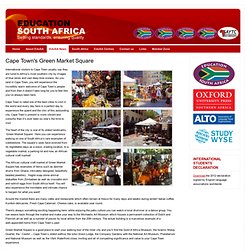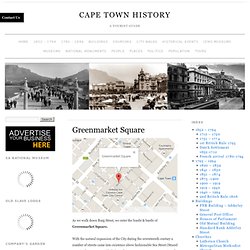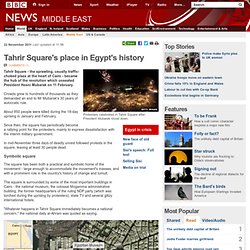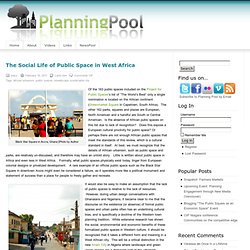

PROGRAMME PAGE - RECLAIM CAMISSA. Cape Town's Green Market Square. International visitors to Cape Town usually say they are lured to Africa’s most southern city by images of blue skies and vast deep blue oceans.

As you land in Cape Town, you will experience the incredibly warm welcome of Cape Town’s people and from then it doesn’t take long for you to feel like you’ve always been here. Cape Town is rated one of the best cities to visit in the world and every day here is a perfect day to experience the quaint and the chic of this astounding city. Cape Town’s present is more vibrant and colourful than it’s ever been so now’s the time to visit. The heart of the city is one of its oldest landmarks, ‘Green Market Square’. Here you can experience walking on one of South Africa’s rare examples of cobblestone. Around the market there are many cafes and restaurants which often remain al fresco for many days and weeks during winter! There's always something exciting happening here: while enjoying the patio culture you can watch a local drummer or a dance group. Greenmarket Square, Cape Town. Www.chico.ca.us/document_library/documents/Section2.pdf.
Greenmarket Square » Cape Town History. Map DataMap data ©2014 AfriGIS (Pty) Ltd, Google Map Data Map data ©2014 AfriGIS (Pty) Ltd, Google As we walk down Burg Street, we enter the hustle & bustle of Greenmarket Square.

With the natural expansion of the City during the seventeenth century a number of streets came into existence above fashionable Sea Street (Strand Street). These streets, with their modern names, were: Heere Street (Castle Street), Rijger Street (Shortmarket Street), Olifant Street (Longmarket Street) and Tuin Street (Church Street). In the course of time, when the square became the administrative and social centre of the town, simple dwellings gave way to imposing and elegant buildings.
During the early 1730′s thatch-roofed dwellings, in Town, began to disappear and in their place flat-roofed houses of one, two and three stories were erected. The better type of house resembled in many ways the Koopmans de Wet House in Strand Street. Proclaimed a National monument 1961. Tahrir Square's place in Egypt's history. 22 November 2011Last updated at 11:56 Protesters celebrated in Tahrir Square after President Mubarak stood down.

Tahrir Square - the sprawling, usually traffic-choked plaza at the heart of Cairo - became the hub of the revolution which unseated President Hosni Mubarak on 11 February. Crowds grew to hundreds of thousands as they demanded an end to Mr Mubarak's 30 years of autocratic rule. About 850 people were killed during the 18-day uprising in January and February.
Since then, the square has periodically become a rallying point for the protesters, mainly to express dissatisfaction with the interim military government. Greenmarket Square. A History of Tahrir Square. The Social Life of Public Space in West Africa. ’s list of “The World’s Best” only a single nomination is located on the African continent ( in Capetown, South Africa).

The other 162 parks, squares and plazas are European, North American and a handful are South or Central American. Is the absence of African pubic spaces on this list due to lack of recognition? Does this expose a European cultural proclivity for public space? Or perhaps there are not enough African public spaces that meet the standards of this review, which is a cultural standard in itself.
At best, we must recognize that the details of African urbanism, such as public space and parks, are relatively un-discussed, and therefore may have an untold story. Street in Accra, Ghana (Photo by Author) It would also be easy to make an assumption that the lack of public spaces is relative to the lack of resources.
Historically, West African city centers grew out of the courtyard space in front of the Chief’s palace, where a plaza would double as the weekly market. Resuscitating the Fez River. Honor Award Bureau E.A.S.T., Fez, Morocco Client: Régie Autonome Intercommunale de Distribution d'Eau et d'Electricité de Fès (RADEEF) Close Me!

The Sebou River Basin. The city of Fez is located within one of Morocco’s most fertile valleys, the Sebou River Basin. Data reveals that the river is relatively clean before reaching the medina and that contamination, mainly chromium, emerges from within—presumably by discharge from the Chouara Tanneries. Close Me! Utilizing Fez, Morocco as a case study, we envisioned a strategic plan that simultaneously restores an urban river and addresses issues endemic to aging medieval fabrics such as the scarcity of open space, overcrowding, a weak economy, and the destruction of natural resources and places of cultural and historic significance. Truly a remarkable that responds for the need do creative yet culturally adaptable solutions to crowded urban areas.